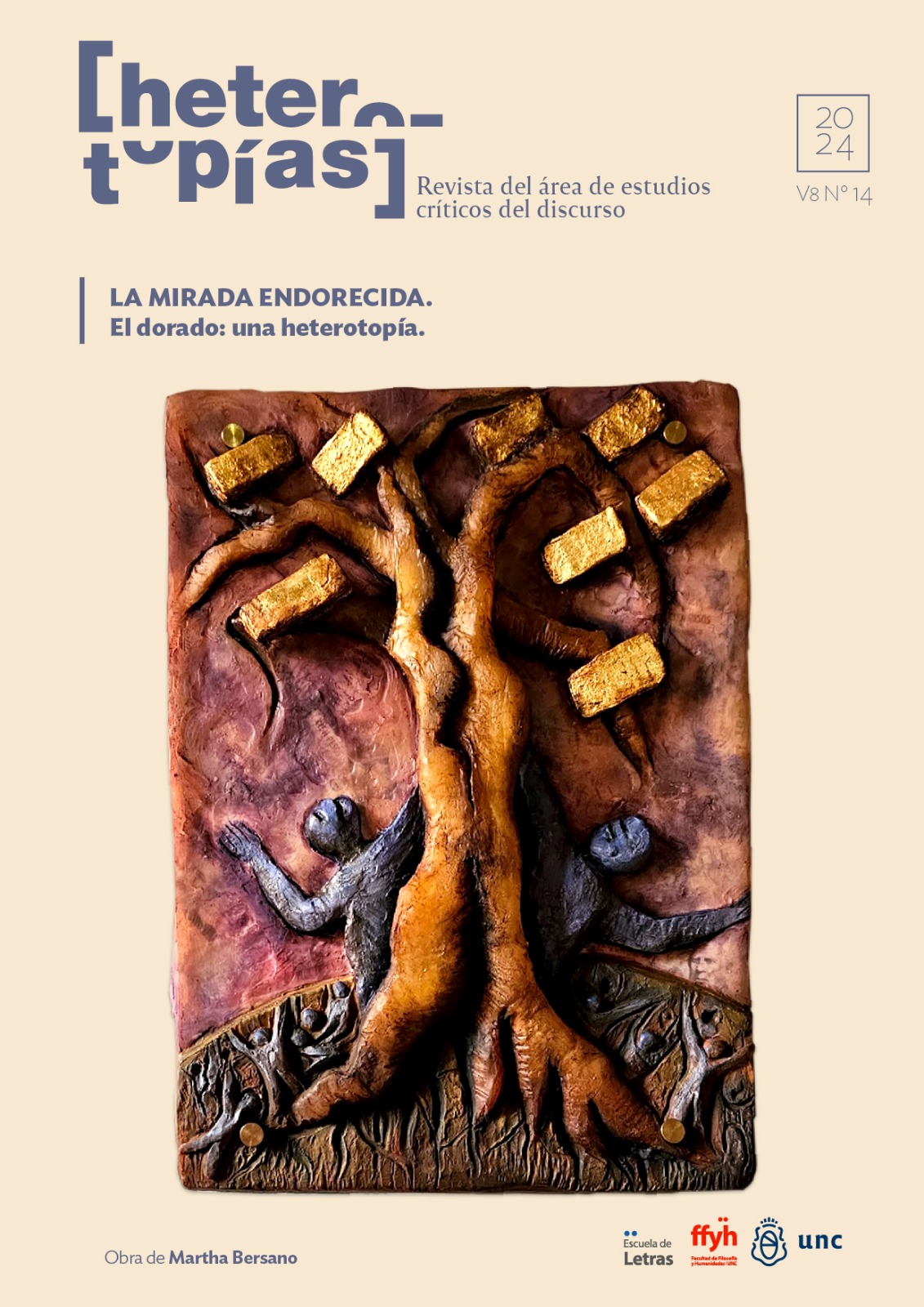The Gilded Gaze: Capitalism, Infection and early Colonialism
Main Article Content
Abstract
At the intersections of capitalist desire, extractive colonization, and the cultural and physical epidemics that impacted Indigenous peoples during the Klondike Gold Rush (1896–1899), I analyze how gold became a symbol of greed and domination, transforming local economies and ecologies into exploited lands, beings, and communities. Through historical accounts and Indigenous cosmologies, the narrative highlights the active resistance (or survivance) of the Tlingit and Tagish peoples, who, through ceremonies like the potlatch, challenged colonial structures and restored communal balance. I explore extractive colonialism as a system that commodifies lands, resources, and people, while Indigenous accounts offer pathways for cultural healing and recovery. I invite a reimagining of human and non-human relationships within the context of a voracious capitalist economy, advocating for decolonization as an act of justice and restoration.
Downloads
Article Details

This work is licensed under a Creative Commons Attribution-NonCommercial-ShareAlike 4.0 International License.
Those authors who have publications with this journal, accept the following terms: Those authors who have publications with this journal, accept the following terms:
a. The authors will keep their copyright and guarantee to the journal the right of first publication of their work, which will be simultaneously subject to the Creative Commons Attribution - Non-Commercial - Share Alike (by-nc-sa) Attribution License; no commercial use of the original work or any derivative works is allowed, the distribution of which must be done with a license equal to the one that regulates the original work.
b. Authors may adopt other non-exclusive license agreements for the distribution of the published version of the work (e.g., deposit it in an institutional telematic archive or publish it in a monographic volume) provided that the initial publication in this journal is indicated.
c. Authors are allowed and recommended to disseminate their work through the Internet (e.g. in institutional telematic archives or on their website) before and during the submission process, which may lead to interesting exchanges and increase the number of citations of the published work. (See The effect of open access).
How to Cite
References
Baldwin, J. (1963) The Fire Next Time. Nueva York: Vintage.
Berton, P. (2001) Klondike: The Last Great Gold Rush, 1896-1899. Toronto: Anchor Canadá.
Betasamosake Simpson, L. (2014) “Land as Pedagogy: Nishnaabeg Intelligence and Rebellious Transformation” en Decolonization: Indigeneity, Education and Society 3, no. 3 pp. 1-25. En línea: http://decolonization.org/index.php/des/article/view/22170/17985 (accedido el 29 de noviembre de 2016).
Bracken, C. (1997) The Potlatch Papers: A Colonial Case History. Chicago: University of Chicago Press.
Cruikshank, J. (1988). The Social Life of Stories: Narrative and Knowledge in the Yukon Territory Vancouver: UBC Press.
Dauenhauer, N. M (1988) “Listening for Native Voices (Native Writers’ Workshop, Nome, Alaska)” en The Droning Shaman, Haines, AK: Black Current Press, 1988.
Dauenhauer, N. M; Dauenhauer, R. (1990) Haa Tuwunáagu Yís, for Healing Our Spirit: Tlingit Oratory. Seattle: University of Washington Press; Juneau: Sealaska Heritage Foundation.
Lena M. L. (2011) “Tlingit Women in Leadership: One Culture, Two Worlds”. Tesis de Maestría, Regis University. En línea: http://epublication.regis.edu/cgi/viewcontent.cgi?article=1673&context=theses (accedido el 22 de diciembre de 2016).
Mamdani, M. (2012) Define and Rule: Native as Political Identity. Cambridge, MA: Harvard University Press.
Morse, K. (1993) The Nature of Gold: An Environmental History of the Klondike Gold Rush. Seattle: University of Washington Press.
Pratt, R. H (1973) “The Advantages of Mingling Indians with Whites” en Americanizing the American Indians: Writings by the ‘Friends of the Indian’ 1880-1900. Cambridge, MA: Harvard University Press.
Rodgers, D. (2014). The Work Ethic in Industrial America 1850-1920. Chicago: University of Chicago Press.
Russell, C. (2004). “Tools to Self Definition: Nora Marks Dauenhauer’s ‘How to Make a Good Baked Salmon’” en Studies in American Indian Literatures, serie 2, vol. 16, no. 3.
Stoler, A. L. (2011) “Colonial Aphasia: Race and Disabled Histories in France” Public Culture 23, no. 1, pp. 121-156.
Vizenor, G. (2008) “Aesthetics of Survivance” en Survivance: Narratives of Native Presence editado por Vizenor, Lincoln: University of Nebraska Press.
Walker, Hon. J. H (miércoles 23 de agosto de 1893) Comentarios de Massachusetts en la Cámara de Representantes en Republican Campaign Textbook (1896).
Vimalassery, M; Hu Pegues, J; Goldstein, A (2016) “Introduction: On Colonial Unknowing”, Theory and Event 19, no. 4, Octubre. En línea: http://muse.jhu.edu/article/633293http://muse.jhu.edu/article/633293
